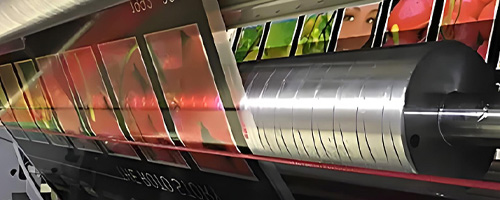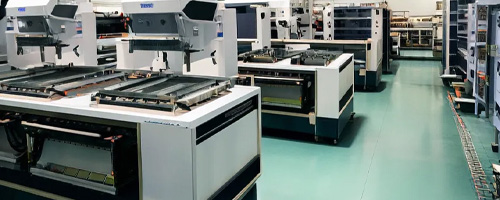 RU
RU
 EN
EN
 CN
CN

Position:HOME > Ink Knowledge

The pattern on the printing plate is prominent, the blank place is concave, through the anilox rollers to transfer ink, generally printed with water-based and UV inks, can reach 400 meters per minute. Flexographic printing is also a kind of letterpress printing.

The printing pattern on the surface of the printing plate is concave, the blank space is protruding, the printing ink layer is very thick, the color is bright, the line is clear, and the saturation is high. Solvent-based ink and water-based ink are available!

The graphic part and the blank part is in the same plane, to the surface of the printing plate inking, only the graphic part of the adsorption of ink, plate work is simple, low cost, suitable for large quantities of printing, mainly using solvent-based inks.

The printing plate consists of a number of small sieve holes, non-graphic part of the mesh is coated with a photopolymer coating sealed, printing adaptability, thick ink layer, three-dimensional sense of strong, bright colors, mainly solvent-based ink.
The choice between water-based and solvent-based inks for food packaging hinges on multiple factors. Water-based inks are the clear choice when environmental sustainability and food safety are priorities.
Apr 11 2025
The U.S. Food and Drug Administration (FDA) plays a crucial role in the supervision of food grade ink. Through strict testing standards and certification processes, it safeguards food safety.
Apr 10 2025
This article provides a detailed explanation of food grade ink regulations in countries such as the United States, the European Union, China, Japan, and India, covering migration limits, prohibited substances, and testing processes
Apr 09 2025
Food-grade inks used in flexographic printing, as key materials that come into direct contact with food or may indirectly affect food safety, have attracted much attention in terms of their characteristics, safety, and applications.
Apr 08 2025
In the process of flexographic printing, the anilox roll plays a crucial role in accurately transferring ink, and its condition directly affects the quality of printing.
Apr 07 2025
The anilox roll is one of the core components in flexographic printing. It plays a crucial role in evenly transferring ink to the printing plate. The line count of the anilox roll, as an important parameter, has an extremely significant impact on the qual
Apr 03 2025
Can water-based ink replace solvent based ink for screen printing? This article elaborates on the advantages of water-based ink in screen printing, as well as its technical bottlenecks and process parameter optimization
Apr 02 2025
This article provides a detailed explanation of the FDA standards, process parameters, and brand cases for water-based ink printing on pizza paper boxes, as well as the advantages of water-based ink printing on pizza paper boxes
Apr 01 2025
Zhongzhixing addresses traditional UV ink odor challenges through low-odor formulation and efficient curing, while maintaining gloss, weather resistance, and reliability.
Mar 31 2025
Which is more cost-effective, gravure printing or digital printing? This article uses the latest data from 2024 to break down equipment, consumables, labor costs, environmental protection, and other costs for you
Mar 28 2025